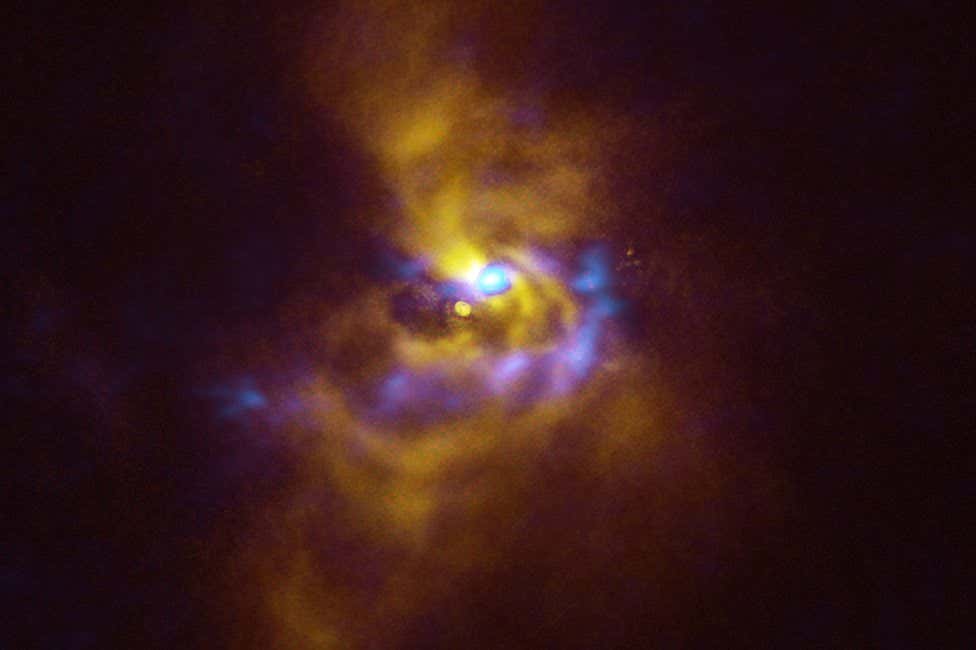This mesmerising image of star V960 Mon spitting out gas jets to create arms larger than our entire solar system shows how massive planets may come together via gravitational instability
By Chen Ly
25 July 2023
Young star V960 Mon is surrounded by giant yellow spiral arms of dusty material in this image created by data from the SPHERE instrument, while the ALMA telescope reveals clumps (coloured blue) that could contract and collapse to form giant planets
ESO/ALMA (ESO/NAOJ/NRAO)/Weber et al.
In this hypnotic photo, a young star called V960 Mon is encircled by giant arms of cosmic dust, which may eventually collapse to form gas giant planets as colossal as Jupiter.
There are two ways that planets tend to develop: core accretion and gravitational instability. In core accretion, bits of solid matter around a star collide and slowly snowball into a planet.
But with gravitational instability, gas and dust contract into clumps that collapse under their own gravity to form the core of a planet. This is thought to happen further away from the host star than core accretion, where the dust and gas are much cooler, leading to the formation of gas giants.
Advertisement
Read more:
A star has been eating an orbiting planet for 85 years
So far, though, there has been a lack of observations to establish exactly how planets arise due to gravitational instability.
Now, Philipp Weber at the University of Santiago, Chile, and his colleagues have used the Spectro-Polarimetric High-contrast Exoplanet Research (SPHERE) instrument at the European Southern Observatory’s Very Large Telescope in Chile to detect the planet-forming process in action, creating the image above.
